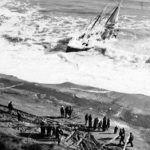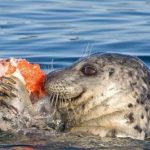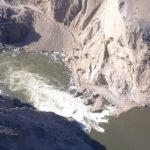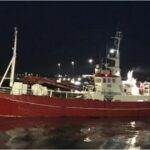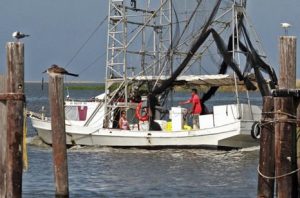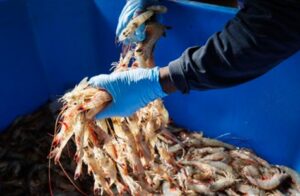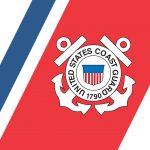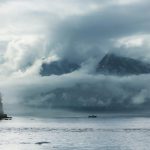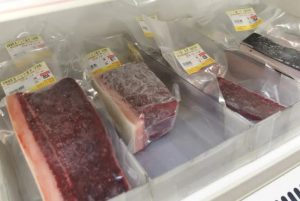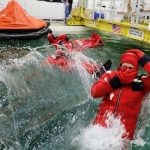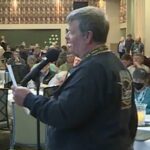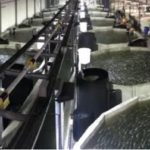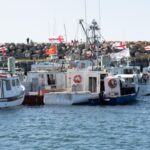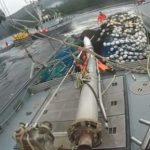Tag Archives: Bering Sea crabbers
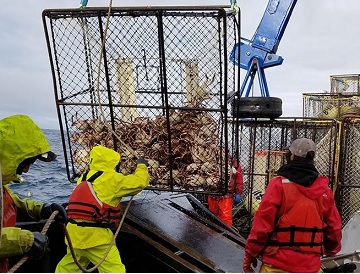
NOAA, ADFG, Bering Sea Crabbers Teaming Up On Red Crab Fishery Research
Tempestuous weather and icy seas make winter research on Bristol Bay red king crab challenging. This winter, crab fishermen are working together with scientists to make it possible. The Bering Sea crab industry is partnering with NOAA Fisheries’ Alaska Fisheries Science Center and the Alaska Department of Fish and Game to meet a critical need for winter data on Bristol Bay Red king crab. Scientists and fishermen will work together on the month-long field research, set to launch in March. The research responds directly to data requests from the North Pacific Fishery Management Council to inform their management decisions. Photos, >click to read< 10:12
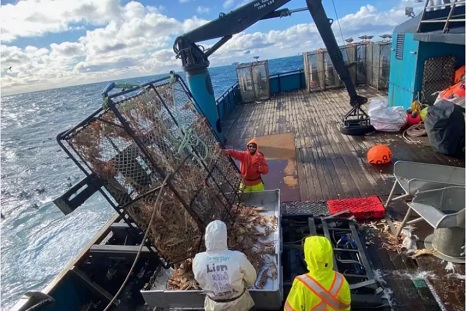
Disaster requests for Bering Sea crabbers highlight difficulty of getting financial relief to fishermen
The current process of getting financial relief to fishermen is cumbersome and takes a long time, but Bering Sea crabbers are hoping the plight of the snow crab population might change the way financial relief is delivered to fishermen. Gabriel Prout is a second-generation Bering Sea crab fisherman from Kodiak; he owns the F/V Silver Spray with his dad and brothers. He said there’s one big problem with the current process for handing out fishery disaster funding. “If you’re going to have a fishery disaster request program, you should be able to make it so the money is getting into the hands of those affected very quickly,” said Prout. Right now, it takes years for money to reach skippers and their crews. >click to read< 13:44
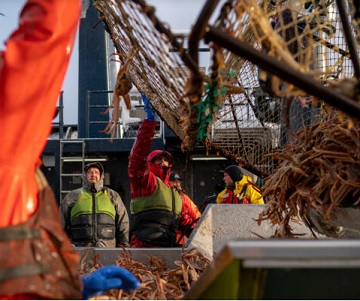
Alaska snow crab fishery saw steep decline. A reporter went ‘Into the ice’ to see it for himself.
CG: Well, at the heart of this reporting that you did were snow crab numbers. So what’s going on with those snow crab numbers? And how steep of a decline have they seen? HB: Well, it’s really pretty stunning for some of the biologists who do the surveys because, of course, in 2020, because of COVID, they were unable to do the summer surveys of crab population. So they did them in 2019. And when they came back in the summer of 2021, they found these staggering drops in abundance of different populations of the snow crab. The juvenile females were down by more than 99%. The juvenile males were also way down. And they’re also less of the mature males and the mature females. So this really triggered a major reassessment of what would be a safe level of harvest for this 2022 season. And they ended up still having a harvest, but reducing it by nearly 90%, >click to read< 16:37
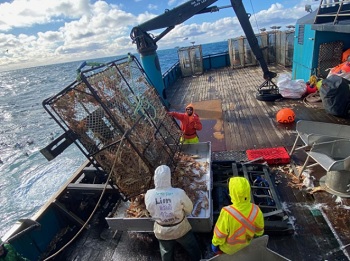
Coronavirus: Bering Sea Crabbers Push For Extended Season
A group of Bering Sea crabbers say the Coronavirus pandemic has slowed their fishing season, and they want more time to catch their quota before the state shuts down their season next week. For the few boats fishing bairdi crab this year, there could be a lot at stake if they don’t have time to catch their full quota. “I’m thinking they don’t quite understand what we’re going through out here,” said Oystein Lone, captain of the 98-foot crab boat Pacific Sounder, which is based out of Dutch Harbor. >click to read< 07:55
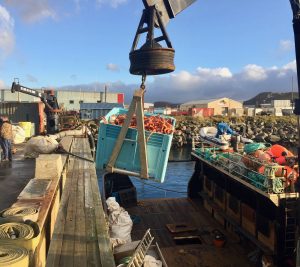
Crabbers face another round of harvest cuts
Bering Sea crabbers started their 2019-20 season this week with a mixed harvest bag and an uncertain future for their fisheries. The NPFMC and Alaska Dept. of Fish and Game, which collaboratively manage the state’s crab fisheries, announced the catch limits and overfishing limit for the Bering Sea/Aleutian Islands and Bristol Bay crab fisheries last week, just in time for the fisheries to open Oct. 15. While the eastern Bering Sea snow crab fishery’s total allowable catch is up, the Bristol Bay red king crab fishery’s is down and there won’t be a Bering Sea Tanner crab fishery at all. >click to read< 21:52
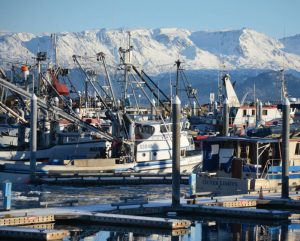
Alaska: Seafood industry faces more uncertainty
As another year draws to a close, the seafood industry seems to be facing even more uncertainty than usual, with some groundfish stocks cratering, salmon runs behaving in historically strange ways, trade wars with China imposing some tariffs on a variety of products, and the state being on the forefront of climate change. The year started out with a Pacific cod quota cut of 80 percent in the Gulf of Alaska, an unexpected drop after a strong year class from 2012 suffered unusually high mortality due to a warm period from 2014 to 2016.,, Bering Sea crabbers started the year with a 19.5 million-pound opilio quota that proved difficult for some boats, >click to read<09:30
Bering Sea Crabbers Release White Paper Tackling the Economic Impact of Illegal Crab Poaching in Russia on the U.S.
 Frequentz and the Alaska Bering Sea Crabbers’ is pleased to announce the release of a white paper shedding light on the estimated $600 million lost in U.S. tax revenue and commercial fishing profits since 2000 as a result of competition with illegal Russian crab. In addition to the significant economic impact and threat to the livelihoods of small, independently owned family businesses, the paper explains how consumers are being duped by illegally harvested crab entering the global supply chain, often under the guise of being sustainably sourced. Read the rest here 08:35
Frequentz and the Alaska Bering Sea Crabbers’ is pleased to announce the release of a white paper shedding light on the estimated $600 million lost in U.S. tax revenue and commercial fishing profits since 2000 as a result of competition with illegal Russian crab. In addition to the significant economic impact and threat to the livelihoods of small, independently owned family businesses, the paper explains how consumers are being duped by illegally harvested crab entering the global supply chain, often under the guise of being sustainably sourced. Read the rest here 08:35
Bering Sea crabbers feel like they’ve been ‘rammed’ by Congress
 The scheduled opening of the Bristol Bay red king crab season Tuesday could be delayed because of the shutdown of federal agencies including the National Marine Fisheries Service’s RAM program, which issues individual fishing quota permits. “We’re pretty concerned about it,” said crab fishermen’s representative Jake Jacobsen of the Inter Cooperative Exchange. “We can’t set pots until we have an IFQ permit on board the vessel.” He hopes the RAM staff in Juneau will soon be “unfurloughed.” more@bristolbaytimes 14:13
The scheduled opening of the Bristol Bay red king crab season Tuesday could be delayed because of the shutdown of federal agencies including the National Marine Fisheries Service’s RAM program, which issues individual fishing quota permits. “We’re pretty concerned about it,” said crab fishermen’s representative Jake Jacobsen of the Inter Cooperative Exchange. “We can’t set pots until we have an IFQ permit on board the vessel.” He hopes the RAM staff in Juneau will soon be “unfurloughed.” more@bristolbaytimes 14:13

































